2022 Week 3: Family Wellness
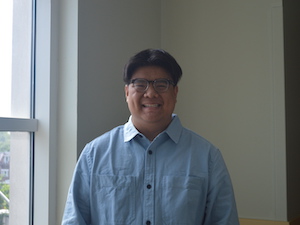 Kobi Khong | Rebuild, Overcome, and Rise (ROAR) Center
Kobi Khong | Rebuild, Overcome, and Rise (ROAR) Center
This week I continued with my community-centered work with the Rebuild, Overcome, and Rise Center contacting and soliciting feedback on how the center can improve their services and ways that they did excel.
Some of my calls went to voicemail, some people answered, but a lot of my attempts also went to failed calls, with numbers that are no longer in service, and while at first I felt disheartened because of the lack of response, every time I heard the “We’re sorry, you have reached a number that has been disconnected or is no longer in service” it also made me wonder where the people I contacted might possibly be.
While it’s nice to imagine that with every meeting with ROAR, people are able to find peace and prosperity, it’s naive to ignore the constant demoralizing effects of the systemic injustices that exist in our city, nation, and world. I can be hopeful that perhaps, they stopped responding to the case managers at ROAR because they achieved the state of wellness and security they wanted, but it’s difficult to know. Survivors of crime are at risk of being victimized again, and the survivors are less likely to call police or reach out to resources as a result of being dispirited in the systems and processes that exist.
When I fall into these spirals of despair, something that helps me is remembering the calls that I get that do go through, where I start off with my script:
“Good morning, may I speak to X? Hi How are you? I’m Kobi Khong, an intern at ROAR…”
-and then transition into doing the trapeze act of balancing a professional yet folksy tone asking about their feedback on ROAR. I’ve had the opportunity to hear the genuine appreciation for the services and work and ways that the center can impact people’s lives. We will not be able to transform the entire justice system overnight and change the world, but with every client that they are able to help, it can immensely change their world, and that is one step toward our goal.
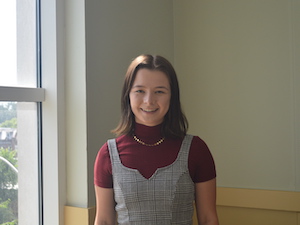 Maddy Kye | Episcopal Refugee & Immigrant Center Alliance
Maddy Kye | Episcopal Refugee & Immigrant Center Alliance
My day begins with a brief walk from my apartment to the office, which is short enough that I enjoy getting a few minutes of outdoor time, but long enough that I am cursing the heat by the time I arrive at the office. One of my current projects is coordinating donations for a silent auction, so I typically start the day by checking my email. I scroll through for any new developments, and, if there are new replies from potential/preexisting donors, add them to my corresponding spreadsheet. I’ve found that tracking my progress on this project through both folders on Gmail and a spreadsheet have been crucial; despite having all of the information accessible in my inbox, it simply isn’t as readable there as it is when seen on a spreadsheet.
I then switch gears and research current legislation and news having to do with immigration policy, both in Maryland and at the federal level. This has more variety than the silent auction project: some days I am looking into county elections, others I am reading about DACA. The end goal for this project is going to be an advocacy page on the ERICA website, which will seek to keep people informed and motivate them to take action.
To address the prompt about inspiring people I’ve met, I have been privileged to attend multiple meetings between people of various organizations committed to doing good in the world by serving immigrants. I went to a meeting last week during which Maryland nonprofits brainstormed different ways through which they could collaborate; this exposed me not only to a wide array of nonprofits and their work, but the vast opportunities for collaboration between them that they had yet to take advantage of. It was very uplifting to witness, and, beyond that, motivated me to continue striving to form connections with others in the nonprofit sector to see what they stood for and how we could work with one another.
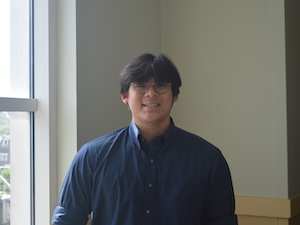 Jonathan Lee | Court Appointed Special Advocates (CASA) for Children of Baltimore
Jonathan Lee | Court Appointed Special Advocates (CASA) for Children of Baltimore
Now wrapping up my third week with CASA Baltimore, I feel a lot more confident than when I came in. Everything is starting to click, and I have a lot of clarity for the big projects I have planned. I’m getting to know my coworkers a lot better now, and it’s been great getting to learn from their experiences. As a part of creating CASA’s resource guide, I started conducting interviews with some of CASA’s supervisors and coordinators. Examples of questions I asked included “What are some concerns that volunteers have expressed regarding needing support? Do they feel supported by CASA?” and “What are the most common resources that youth in foster care ask for (career readiness, substance use, housing)?” The general consensus was that career readiness programs and cash assistance were the most asked about resources from volunteers. There was also a lot of emphasis put on creating a robust Life Skills section. This was reassuring as my supervisor and I have been discussing creating this section for a couple weeks now. Some of my original lessons included opening a Roth IRA, applying for SNAP, and writing a resume; however, my coworkers brought up additional ideas such as how to open a bank account, where to get a loan, and how to pay rent and budget for groceries.
In addition to conducting interviews, I’ve been doing a lot of research and solidifying what will be on the resource guide. Because of the big focus that has been put on life skills by my colleagues, I’m going to be a lot more intentional with the resources I choose. For example, I probably won’t include twenty transportation resources. I’m going to focus on bigger picture things like SNAP, OHEP, utilities, housing, career centers, etc. This will make it easier for readers to navigate the resource guide. My next steps are to create a survey that we can distribute to volunteers and eventually our youth in foster care.
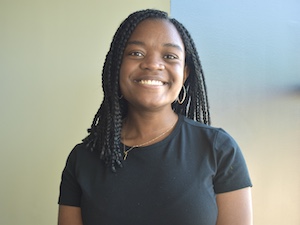 Koye Oputa | BCPS Special Education
Koye Oputa | BCPS Special Education
There is no typical day of work for me when I’m with the Special Education Department for Baltimore City Schools.
Some days are spent reconciling differences between the March and May student rosters, learning that ensuring “no child left behind” can come down to something so simple yet important as updating an Excel sheet—an excel sheet that passes through at least 3 different sets of eyes about 100 times before we move on.
Other days I’m off-site helping close down a local high school, witnessing the special kinds of goodbyes that happen when two people with great respect for one another part ways after decades of working together.
Other days I’m at retirement parties, watching coworkers and families gather together to celebrate the 30+ year career of a woman who sacrificed endlessly for the children of Baltimore City Public Schools.
Though there is no typical day at my office, my supervisors have taken the time to include me in the little rituals that provide our days with some added structure.
For example, we never fail to check in on everyone in the office, especially Ms. K who leaves us with little gems like “Don’t rehearse tragedy,” as someone anxiously awaits their 11 o’clock meeting.
Almost everybody, including me, has made a habit of stopping by Ms. CB’s desk to get something sweet from her treat bowl (and to say hi, of course).
Most recently, we’ve made a habit of getting each other outside to get some sunlight during our breaks.
Regardless of how the day to day location or schedule may change, the people of Baltimore City School’s Special Education Office create their own daily rituals in their commitment to showing each other mutual respect and compassion on a daily basis.
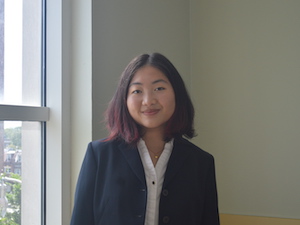 Estelle Yeung | Baltimore Harm Reduction Coalition
Estelle Yeung | Baltimore Harm Reduction Coalition
My typical work day at Baltimore Harm Reduction Coalition includes meetings with BHRC staff, working on some long-term projects, and kit making with volunteers. Every day looks a bit different depending on which meetings I have that day, but I finally feel like I’ve developed a solid routine and am making progress with each project.
A significant project we’ve been working on at BHRC is the BRIDGES Demonstration Overdose Prevention Site (BDOPS). BRIDGES Coalition is a group of community organizations working to end overdose and criminalization of people who use drugs. They are re-launching their “Yes! On My Block!” campaign to advocate for the legalization of Overdose Prevention Sites (OPS) in Maryland through BDOPS. BDOPS will be a demonstration of what an OPS would look like in Baltimore City and will involve guided tours of the mock-OPS set up in a local art gallery. It’s meant to garner public support from Baltimore City and Maryland state officials regarding a legislative push to legalize OPS by providing a clear visualization of it.
By attending meetings and having discussions with my coworkers, I’ve developed a more comprehensive understanding of OPS and why it’s necessary myself. Throughout history, people have always used drugs, and they will continue to, whether they are legalized or not. The war on drugs has not stopped drug use or reduced the stigma surrounding drug use, and fatalities due to drug overdose have been increasing exponentially over the past few years. OPS is currently illegal in the United States, but there are sites in NYC that have local government support and are officially authorized. There are hundreds of sanctioned OPS operating around the world, and they are an evidence-based solution to the opioid crisis.
OPS are harm reduction-based and community-run safe consumption spaces where people who use drugs can do so under medical supervision. Medical professionals at the sites are equipped with naloxone and oxygen to intervene in the event of an overdose, but throughout the world, no one has ever died from an overdose at an OPS. They’re also known as supervised drug-injection sites, syringe service programs, or overdose prevention centers. Participants are provided with sterile equipment to decrease the chance of transmitting HIV or Hepatitis C. They can also be connected to other resources like testing, substance use treatment, and safe disposal of syringes. Importantly, OPS provides holistic resources; in New York, the OPS provides hot meals for participants and places to rest.
I attended our messaging training for BDOPS last week and felt really inspired afterward by the BRIDGES team and BHRC staff. I wondered how community organizers kept up momentum when advocating for legislation, because it seems like legislative progress is always slow and full of political obstacles. Learning more about the logistics of this advocacy campaign has been eye-opening, and I’ve learned that interactive events like BDOPS can play key roles in drawing attention to legislation. I’m looking forward to staffing BDOPS next week and seeing what legislative progress comes of it!
